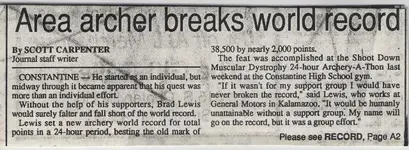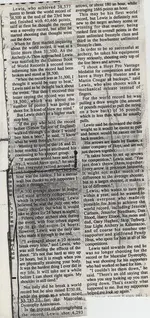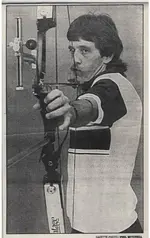Heres an article on what I'm talking about.
Most Versatile Handgun: The .38 Special, .38 Special +P and .357 Magnum Revolver
By Chuck Hawks
The .38 Special, .38 Special +P and .357 Magnum represent three distinct power levels using the same bullets and all three cartridges can be fired from any .357 Magnum revolver. The cases are dimensionally identical, except that the Magnum case is 0.135" longer than the Special case. This prevents .357 Magnum cartridges from entering a .38 Special chamber, but not the reverse.
The point of this article is to illustrate the three basic ammunition power levels available to anyone who owns a .357 Magnum revolver. You gain in performance as you move up the power (and recoil!) scale. You gain in shooting fun as you move back down. Choosing the right power level for the job increases your effectiveness and your shooting pleasure.
These are very accurate cartridges, capable of shooting clover leaf groups at 25 yards from a top quality revolver, so make sure your .357 is a top quality revolver. Do not settle for merely adequate. Good choices would include a Colt Python in a double action revolver or Ruger Blackhawk in a single action revolver.
While we are at it, permit me to recommend a 6" (or longer) barrel for any .357 Magnum revolver, particular if you are seeking to maximize versatility. While a 2"-3" barrel is fine for shooting .38 Special loads at short range and convenient for concealed carry, it is an abomination for a cartridge that must burn the volume of powder in a .357 Magnum case.
The practical minimum barrel length for any .357 revolver is 4". A 4" magnum is compact and often chosen by uniformed police officers who must wear their gun and holster rig all day. Loaded with deep penetrating, heavy bullets it is handy to carry for protection in the field from potentially dangerous predators, such as cougar and black bear. (Works on dangerous two-legged predators, too!) I carry my 4" Python for that purpose when I am not carrying a centerfire rifle. A 4" barrel is also a good choice for a dedicated home defense revolver, as it points well and is harder for an opponent to grab than a longer barrel. The 4" barrel is easily carried in a service type belt holster and you should get something akin to the advertised muzzle velocity (MV), as factory ammunition is tested in a 4" vented barrel.
General purpose .357 Magnum revolvers should have 6" or 6.5" barrels. Of course, a 4" barrel is intrinsically as accurate as a longer barrel and a bit easier to carry, but the longer sight radius provided by a 6" barrel is definitely advantageous for precise sight alignment. The 6" barrel allows a more complete powder burn and thus higher muzzle velocity, more energy on target and a flatter trajectory. Its greater weight also reduces muzzle flip and moves the muzzle blast a bit farther from your face. A Magnum with a 6" barrel is the jack of all trades, equally useful for self-defense, hunting and target shooting. Since factory ammunition is tested in a 4" barrel, a longer barrel should equal or exceed catalog velocities. It is nice to get a little more than you paid for at today's high ammo prices!
An 8" barrel is very nice on a hunting revolver, offering more of the same advantages, but the long holster required to carry an 8" revolver can get in the way if you need to sit down, drive a car and so forth. For walking in the field, it is fine. I have a red dot sight on my 8" Python and it makes a very nice hunting rig. Such a sight seems less ungainly on a big revolver.
.38 Special
This is where our cartridge choices start. The Special was designed as a more powerful alternative to the .38 Long Colt, which had been found inadequate by the U.S. military. It was originally loaded with black powder (158 grain lead bullet at 800 fps), which explains its large case and rather low SAAMI maximum average pressure (MAP) of 17,000 psi. The transition to smokeless powder was rapid and the Special quickly built a reputation as an exceptionally accurate cartridge. It was soon dominating centerfire pistol matches and was widely adopted by police agencies. Not until the 1980's did service autoloaders seriously challenge the popularity of the .38 revolver for police use in the U.S.
For match shooting, a 148 grain lead wadcutter bullet at about 700 fps became the load of choice. Factory loaded match ammunition is offered by Remington, Winchester and Federal, among others. Reloaders typically use a very light charge of an extremely fast burning powder for target loads, such as 2.8 grains of Bullseye, behind a hollow base wadcutter bullet. These are the minimum power .38 loads that most shooters find useful. They are a mild and exceptionally accurate choice for target shooting and plinking.
Standard .38 Special service loads represent a step up in power and versatility and there are many from which to choose. Bullet weights range from about 125-200 grains, with 125-130 grain jacketed bullets (MV about 850 fps) and 158 grain lead bullets (MV about 800 fps) being the most popular choices. These loads are used for practice, plinking and hunting small game. Reloaders typically use a medium burning rate pistol powder, such as Unique, for such loads. According to the Speer Reloading Manual #14, 4.7 grains of Unique gives a 158 grain lead bullet a MV of 815 fps.
For civilian personal protection, the Winchester 110 grain Silvertip JHP bullet at 945 fps (ME 218 ft. lbs.) or Remington 110 grain SJHP bullet at 950 fps (ME 220 ft. lbs.) from a 4" barrel are popular choices. These are the successors to the famous Super Vel high velocity .38 Spec. factory loads of the early 1970's that ushered in the modern era of self defense ammunition. For concealed carry in 2" snub-nosed .38's, Federal's Premium Personal Defense load uses a 125 grain Nyclad LHP bullet at 830 fps and 190 ft. lbs. from a 2" revolver barrel. This is their famous and highly effective "Chief's Special" load.
For apartment dwellers and others concerned with over penetration in densely populated areas, Cor-Bon/Glaser offers a standard pressure Glaser Blue pre-fragmented 80 grain bullet at 1200 fps and 256 ft. lbs. Pre-fragmented loads are reputed to be very effective in the short range, frontal shootings typical of home invasion situations.
No matter what standard pressure Special load you choose, it will provide the least muzzle blast and recoil among our three cartridge options. For new handgun shooters, standard velocity .38 Special loads are a logical step up from the .22 rimfire that should be everyone's first handgun.
.38 Special +P
Before the advent of the .38 +P, there was the .38 Special High Speed (.38/44), intended for use only in large frame revolvers originally designed for .44 caliber cartridges, principally the Colt New Service and S&W "N" frame models. This left plenty of steel in the cylinder to contain the increased pressure. In 1974, the SAAMI established standards for today's .38 Special +P loads, which replaced the .38 High Speed and are suitable for use in most medium frame revolvers, including the Colt Diamondback and S&W "K" frame models of that time. .38 Special +P loads have a MAP limit of 20,000 psi. This allows a significant, but not huge, increase in performance over the standard .38 Special.
Recoil in full size revolvers, although noticeably greater than standard pressure loads, is moderate and easy for reasonably experienced handgunners to control. Effectiveness is good. Muzzle blast is louder than standard pressure .38 loads, but far less than .357 Magnum loads. For many years the standard FBI service load was the .38 Special +P cartridge using a 158 grain lead SWC-HP bullet at a MV of 890 fps. This remains a popular service load and is available from both Remington and Winchester.
For civilian concealed carry and home defense, the Remington and Winchester +P factory loads using 125 grain JHP bullets at 945 fps / 248 ft. lbs. at the muzzle (Winchester figures) are popular choices. Similar is Federal's 129 grain Hydra-Shok JHP at a MV of 950 fps and ME of 260 ft. lbs. These are good personal protection loads for revolvers strong enough to handle them. According to the survey of police shootings conducted by Marshall and Sanow and published in their seminal book Handgun Stopping Power, the various 125 grain JHP +P loads from the major manufacturers achieved "one shot stop" percentages of about 63%-69% from 4" barrels. Their lower recoil and muzzle blast make them faster for repeat shots than full power .357 Magnum loads. They are also less blinding and deafening when fired indoors at night. Reloaders can duplicate such loads by using 5.7-6.0 grains of Unique behind a 125 grain JHP bullet. (Source: Speer Reloading Manual #14.)
Cor-Bon offers two high velocity loads for .38 +P snub-nosed revolvers. These use a 110 JHP at 1050 fps / 269 ft. lbs. and a 125 grain JHP at 950 fps / 251 ft. lbs. For apartment dwellers and others concerned with over penetration in densely populated areas, Cor-Bon / Glaser offers a Glaser Blue +P load with a pre-fragmented 80 grain bullet at 1250 fps and 278 ft. lbs. from a 4" barrel.
.357 Magnum
The .357 Magnum was the first magnum handgun cartridge and for many years it was generally understood by shooters that the term "the Magnum" referred to the .357. Remington ballistics called for a 158 grain bullet at a MV of 1550 fps from an 8-3/8" barrel. Years ago I chronographed some Remington 158 grain JHP factory loads made in the 1960's in a 10" T/C Contender pistol and got an average instrumental velocity of 1580 fps. (Screens placed 10' from the muzzle and 10' apart.) Those were hot .357 loads!
Full power .357 Magnum loads are currently loaded to a MAP of 35,000 psi, which is similar to some medium range rifle cartridges. In fact, rifles for the .357 Magnum cartridge have been made by Marlin, Winchester, Henry, Ruger, Uberti, H&R, NEF and others.
.357 revolvers are a handful for most shooters, especially those not used to magnum handguns. The recoil from full power loads is sharp and the muzzle blast definitely gets your attention. Fire a full power magnum load at night and the flash looks like the gun exploded. Actually, the cartridge's bark is worse than its bite. Experienced shooters can generally learn to control the .357 in magnum size revolvers, such as the Colt Python, S&W Model 27 and Ruger Blackhawk. With practice, very fast and accurate shooting can be accomplished with full power .357 loads in such revolvers.
The .357 Magnum is the lightest recoiling of the traditional magnum revolver cartridges (.357, .41 and .44). Trajectory and penetration are essentially the same, given bullets of the same sectional density, from all three magnums. For self defense, whether in the field or in the city, there is surprisingly little difference in the effectiveness of the magnum cartridges, which makes the .357 a reasonable all-around choice for most shooters.
The .357 Magnum has adequate power for hunting CXP2 game (deer, for example) at short range (50 yards maximum), providing the shooter has the skill to get a suitable hunting bullet into the vitals with the first shot. It also has a sufficiently flat trajectory to engage a rifle toting criminal at 100 yards or more, something to keep in mind for protection in the field or during an urban insurrection. Only a magnum handgun shoots flat enough to realistically oppose even a short range rifle.
.357 field and hunting loads typically use bullets weighting 140-180 grains in front of maximum powder charges. A 158 grain jacketed bullet at a MV of 1235 fps would be typical and such factory loads are available from most ammo manufacturers. Reloaders can produce similar hunting loads using maximum charges of slow burning pistol powders, such as H110, W296 and 2400. According to the Speer Reloading Manual #14, a maximum charge of 14.8 grains of 2400 can drive one of their 158 grain jacketed bullets at a MV of 1265 fps from a 6" revolver.
For bear and cougar protection, I prefer a 180 grain bullet. Winchester, Federal and Remington load 180 grain bullets at a MV of about 1130 fps. The Cor-Bon version is loaded with a 180 grain bonded-core soft point bullet designed for deep penetration at a MV of 1200 fps and ME of 576 ft. lbs.
For personal protection, the full power .357 Magnum is the most effective of all handgun calibers. According to the police shooting results research conducted by Marshall and Sanow and published in their seminal book Handgun Stopping Power, the various 125 grain JHP Magnum loads from the major manufacturers achieved "one shot stop" percentages of about 93%-97%. It just doesn't get any get any better than this. These loads drive a 125 grain bullet at a MV around 1450 fps and ME of 583 ft. lbs. (Remington figures from a 4" vented test barrel.) Federal's 130 grain Hydra-Shok JHP at 1410 fps is in the same general category, despite the "Low Recoil" legend printed on the box. Cor-Bon's High Velocity 110 grain JHP departs the muzzle at 1500 fps and 549 ft. lbs. and their 140 grain JHP achieves 1300 fps and 525 ft. lbs. These are all violent loads with ear splitting and blinding muzzle blast, especially if fired indoors at night.
Somewhat lower in recoil are the loads from Remington, Winchester and others that drive a 110 grain JHP at about 1295 fps MV and 410 ft. lbs. ME (Winchester figures). These achieve one shot stops in the 83%-87% range. For apartment dwellers and others concerned with over penetration in densely populated areas, Cor-Bon/Glaser offers an 80 grain Glaser Blue pre-fragmented 80 bullet at 1600 fps and 455 ft. lbs. from a 4" barrel.
Summary and Conclusion
As we have seen, a .38 Special / .357 Magnum revolver can be extremely versatile. The factory loaded ammunition options range from very mild 148 grain lead wadcutter bullets at around 700 fps to bear stopping 180 grain bullets at 1200 fps and the reloader has even greater load flexibility. No other single handgun offers such a wide power range of loads or the versatility to serve as a credible target revolver, service pistol, handgun for hunting CXP2 game and revolver for protection in the field. A .357 Magnum revolver with a 6" barrel really is the most versatile handgun of them all. If I could have only one centerfire handgun (and in hard times that is exactly what I've owned), it would certainly be a .357 Magnum.













 Do you understand what I'm saying guy? It does make a great difference.
Do you understand what I'm saying guy? It does make a great difference.
 Grooves on tips need a good check for damage but bow looks good from what shows.
Grooves on tips need a good check for damage but bow looks good from what shows.




